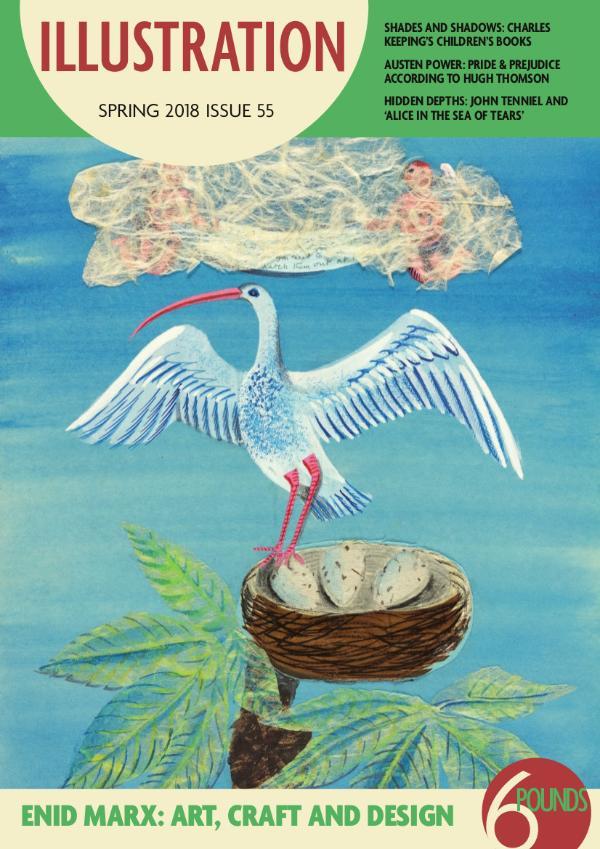
Illustration - Spring 2018 - Issue 55
Spring Issue Highlights
Enid Marx: one of the key artists in the “outbreak of talent” at the Royal College of Art, Enid Marx was typically versatile and brought her mix of pattern and avant-garde art to products from Utility fabrics to books, Underground posters and bookplates. We look at the mix of folk art and modernism that made “Marco” such an outstanding designer.
Charles Keeping: a master of both black and white line illustration and glorious colour picture books, Charles Keeping’s was one of the key artists who helped to revolutionise children’s book illustration in the 1960s. His evocative line drawings brought the physical and emotional battles of the heroes and heroines of books by Rosemary Sutcliff, Henry Treece and Alan Garner to life, while his colour work managed to imbue mundane London streets, sheds and intercity trains with a luminous beauty. His final towering achievement was to illustrate the complete works of Charles Dickens for the Folio Society. We find out more.
Alice in the pool of tears: John Tenniel’s pictures for Alice in Wonderland have become as famous and as loved as Lewis Carroll’s classic text and the picture of Alice swimming in a pool of her own tears is perhaps one of the most iconic scenes. What makes this image so remarkable, what contemporary inspiration did it draw on and why does it stand out in our memories?
Heinrich Hoffmann’s Der Struwwelpeter: a best-seller since 1845, Heinrich Hoffmann’s gruesome cautionary tales have enchanted (and terrified) children in German and in English. The author was no professional artist, but his scenes and characters have a direct simplicity that perhaps makes their violence even more disturbing – one reason why many have been censored in modern versions. We learn about Hoffmann and why he created these tales.
Hugh Thomson and Jane Austen: It is a truth universally acknowledged that Pride and Prejudice is one of the most popular classics ever published. Hugh Thomson’s illustrations, created for the “Peacock” edition in the 1890s captured many elements of Austen’s wit and the nuances of her social commentary to perfection. We take a closer look.
Edoardo Fontana: Wood-engraver Edoardo Fontana has completed works for many of Italy’s finest private presses. He tells us about his inspirations and what he is working on now.
Resources: As the Story Museum in Oxford opens its exhibition “It’s Always Tea Time” we drop in to find out what 72 artists from 19 different countries including Iran, Russia, Spain, Hungary and the Baltic States bring to the party.
Illustrator’s Notebook: Catherine Rayner tells us about how she uses notebooks and what they mean to her.

